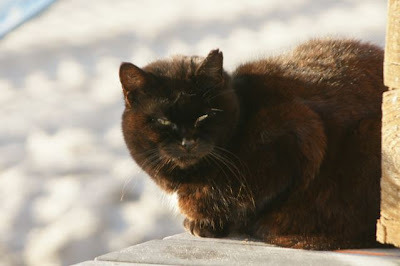Beth Kephart's Blog, page 198
February 25, 2012
Reviewer Envy: Jennifer B. McDonald on The Lifespan of a Fact

Jennifer B. McDonald delivers such a compelling, interesting, forceful review in the New York Times Book Review this weekend that a) I have a severe case of reviewer envy and b) I wish I could quote the whole for you here.
I'll give you the link instead.
It's a front-page review of a book called The Lifespan of a Fact, authored (if that's the word) by John D'Agata and Jim Fingal. The book is the biography, in a sense, of an article D'Agata had written about a suicide in 2002. D'Agata's piece—nonfiction, for The Believer—was apparently riddled with made-up stuff, inaccuracies, small and large fictions, and the fact checker (Fingal) had called D'Agata on each one. D'Agata's response, we're told, devolved into self-defense and bullying, a blatant, often preposterous insistence that his version of the "truth" was superior to the actual facts.
D'Agata's arguments strike me as bluster, silliness, big-headed wrongness, and perhaps it wouldn't matter that much if, for example, he wasn't a writing teacher at the University of Iowa, churning out the next contingent of truth slayers. Throughout her review, McDonald gives him no room, offering paragraph after paragraph of such beautifully argued stuff that I'll be reading the bulk of it to my memoir students this Tuesday. (NOTE: I have not yet read the book myself, but McDonald quotes so freely from it that it is possible to form some early opinions.)
I'll quote here from the core of the piece and hope you'll read the whole for your self:
Superb literary artists have managed to do their work while remaining
precise about details D'Agata would dismiss as frivolous. What of
Updike's criticism and E. B. White's essays and Joan Didion's
sociopolitical dispatches? More recently, what of the narrative
journalism of Katherine Boo, Elif Batuman and Philip Gourevitch, or the
essays and criticism of Jonathan Franzen, Pankaj Mishra and Zadie Smith?
What of John McPhee, who three years ago in The New Yorker went so far
as to write a lengthy ode to his fact checkers? Would D'Agata claim that
these writers' adherence to fact diminishes their art? That when
working in "nonfiction," they don't weigh the same ingredients he does —
structure, theme, resonance, rhythm — in order to wring something
wondrous from the ordinary?
No text is sacred. The best writers know this. Fiction or nonfiction,
poetry or reportage, it can all be endlessly tinkered with, buffed,
polished, reshaped, rearranged. To create art out of fact, to be
flexible and canny enough to elicit something sublime from an
inconvenient detail, is itself an art. For D'Agata to argue otherwise —
to insist that fact impedes the possibilities of literature, and that
anyone who thinks otherwise is "unsophisticated" — betrays his
limitations as a researcher and a writer, not our limitations as
readers.




Published on February 25, 2012 03:26
February 24, 2012
you should write The Godfather

Yesterday, after sending the first 175 pages of my Berlin novel off to Tamra Tuller, whose dearness cannot be quantified, I sat and read those 35,000 words through again. I'd spent the day reading and editing and trimming, of course, and the day before that day doing the same, but there's something about sending your work to another that enables you to read the work newly—to read as a reader and not as a writer. There is, of course, a difference.
My Berlin novel is a complex book. The history it contains and reflects is complicated and important. Kreuzberg is a crazy mix of punkers, immigrants, rebels. Friedrichshain is riddled with spies and deprivation. The characters have to be (for me) a new breed of people. There have to be sub-plots and entanglements. Still, as I read I asked myself questions: Too complex? Too entangled? Should I bring the language down a notch?
At one point, my husband near, I pondered out loud.
He listened, briefly, then decided. "People like simple stories," he said. "You should write The Godfather."




Published on February 24, 2012 03:49
February 23, 2012
masquerades and pseudonyms: The Dressmaker story

Julie Bosman's New York Times feature on author Patricia O'Brien intrigues us. O'Brien had sold five novels, the story goes, but could not sell a sixth, entitled The Dressmaker, thanks to the sales of her previous titles. O'Brien's agent suggested a pseudonym. O'Brien agreed. Within just three days The Dressmaker had sold for a very nice sum under a new author name, Kate Alcott.
There was some lingering subterfuge to attend to, of course. Some funny back and forth—a new email address, scanty personal details—with an editor who believed she had bought the work of a first-time author. But it wasn't until it was author photo time and the first blurred photo that the author sent was deemed no good that the gig was finally up, the truth spoken.
As one who teaches memoir and advocates for the truth in the form, it's hard to know how to feel about this. I mean, we're talking about fiction, after all. And the pseudonym business surely isn't new. And I'm certainly one of many writers who wishes deeply that the sale of her future books were not so tied to the sale of books she already wrote. We aren't always responsible for what happens to our books out there—can't insist on publicity, can't do much about where our books sit within our publishing house's priorities, can't dictate whether or not ads will be taken, whether or not a tour will be financed, whether or not the book resonates at this particular time, whether or not a lot of things.
But when I try to imagine keeping the charade going post sale—interacting with an editor under false pretenses, say—I wonder if I would have had the gumption to keep going, editorial letter after editorial letter, conversation after conversation. I suspect I'd be one of those who would have early on had to blow her cover. Working with an editor is personal, in the end. And novel writing can be akin to confession.




Published on February 23, 2012 08:12
February 22, 2012
My conversation with Jennifer Brown, Children's Editor, Shelf Awareness

Not long ago, I wrote a piece for Shelf Awareness, that fantastic e-newsletter for the publishing trade, about the future of young adult books—underscoring trends, suggesting new possibilities. Publishing the essay was, of course, a privilege. But the greater privilege was all that went on behind the scenes, as I worked with Jennifer Brown, the SA children's editor. It wasn't just a back-and-forth about a story's shape and timing. It was a conversation—wide-ranging, funny, thoughtful, perpetually kind. I frankly couldn't get enough of Jenny, and when I asked Ed Nawotka of Publishing Perspectives if I might interview her for a profile, he said (thank you, Ed) yes.
Here, then, is Jennifer Brown—editor, reviewer, advocate, enthusiast—whose impact on children's books is the stuff of which legacies are made. She could, I've often thought, write the definitive book on the history of books written for the young. For now, though, she's focused on brightening the future.
A brief side note. Yesterday, Laura Geringer, who asked me to write for teens in the first place and edited five of my YA titles, mentioned in a note that an animated short with which she had been involved had been nominated for an Oscar. The Fantastic Flying Books of Mr. Morris Lessmore (which is glorious, and can be watched here) is dedicated to Bill Morris, a man who mentored Jenny for many years. Paths cross and tangle in publishing. I am grateful to be knotted in.
My previous Publishing Perspectives stories can be found here:
Unglue.it: Changing the future of e-books....
The Value Rubric: Do Book Bloggers Really Matter?
The Attraction-Repulsion of International Literature: My conversation with Alane Salierno Mason
Transforming Children's Book Coverage at the New York Times: My conversation with Pamela Paul
Success is when the world returns your faith: My conversation with editor Lauren Wein
Between Shades of Gray: The Making of an International Bestseller




Published on February 22, 2012 03:14
February 21, 2012
Stillness where it was earned: my beautiful students
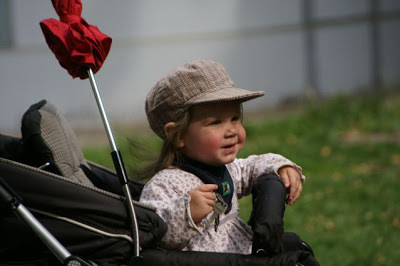
Cap on her head, keys in her hand, a red umbrella should the sun turn to rain, and she is ready. We love her for what she knows already and for what she's about to find out.
It's the same brand of love that I felt for my students today as they presented their memoir proposals. With the greatest care they had framed their personal quests. With the greatest possible kindness they listened one to the other—challenging, encouraging, honoring, wondering, suggesting, making room.
Humor where humor was needed. Stillness where it was earned. Simple condemnation absent among us.
Yes.




Published on February 21, 2012 15:28
Anticipating Teen Day in Manayunk with Five Extraordinary Writer Friends
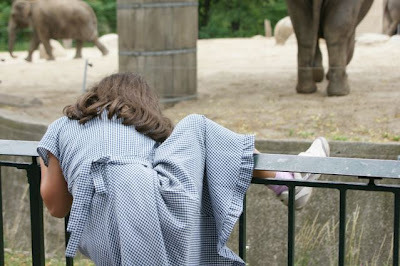
Many months ago, I received an invitation to read from You Are My Only at The Spiral Bookcase, a new independent bookstore in Manayunk, PA. I was, of course, keen to meet the store's very dear owner, Ann. And I was thrilled to have a chance to support a new independent (how many new independent bookstores do you know?) But how much more fun would be had, I thought, if I could be joined in the event by some of the best young adult writers around.
And so Ann and I talked. And so one thing led to another. And so it is with a great sense of anticipation and pleasure that I am sharing news of the inaugural Teen Day in Manayunk, to be held during the afternoon of March 24th. There will be writing workshops for teen authors. There will be a writing contest with winning entries (judged by Elizabeth Mosier and yours truly) appearing in the extraordinary teen-lit magazine Philadelphia Stories, Jr. and on The Spiral Bookcase web; I'll also be excerpting winning work here. There will be marching bands and media coverage and appearances by some very special souls.
I encourage teachers, parents, and young writers in the Philadelphia area to find out more about the writing contest, workshop, and meet-and-greet by contacting Ann at The Spiral Bookcase. I encourage the rest of you to consider spending time with some truly fine writers along the canal.
Here we all are. There we all will be.
Susan Campbell Bartoletti is best known for her nonfiction books, including the Newbery Honor-winning Hitler Youth: Growing Up in Hitler's Shadow (Scholastic) and the YALSA Excellence in Nonfiction Honor-winning They Called Themselves the K.K.K.: The Birth of An American Terrorist Group (Houghton Mifflin). Her most recent titles include the novel The Boy Who Dared (Scholastic) and a picture book Naamah and the Ark at Night (Candlewick 2011), illustrated by the amazing Holly Meade. www.scbartoletti.com <http://www.scbartoletti.com> <http://www.scbartoletti.com>
Beth Kephart is the National Book Award-nominated author of thirteen books, including the teen novels Undercover, House of Dance, Nothing but Ghosts, The Heart Is Not a Size, Dangerous Neighbors, and You Are My Only; Small Damages is due out from Philomel in July. Beth, who is an adjunct faculty member of the University of Pennsylvania, blogs at http://beth-kephart.blogspot.com/.
A.S. King is the author of the highly acclaimed Everybody Sees the Ants, a YALSA 2012 Top Ten Fiction for Young Adults book, the 2011 Michael L. Printz Honor book Please Ignore Vera Dietz, ALA Best Book for Young Adults The Dust of 100 Dogs, and the forthcoming Ask the Passengers. Since returning from Ireland where she spent over a decade living off the land, teaching adult literacy, and writing novels, King now lives deep in the Pennsylvania woods with her husband and children. Lean more at www.as-king.com <http://www.as-king.com> <http://www.as-king.com> .
April Lindner is the author of Jane, the acclaimed contemporary retelling of the classic novel Jane Eyre and the author of several poetry collections. She is a professor of English at Saint Joseph's University.
Keri Mikulski is the author of Head Games, Stealing Bases, and the forthcoming Making Waves and Fifteen Love—all sports-themed books for the reluctant reader. http://kerimikulski.com/
Elizabeth Mosier's work for young adults includes My Life as a Girl (Random House) and My First Love (Delacorte, under the pseudonym Callie West), as well as numerous short stories in Seventeen and Sassy. She has recently completed a third YA novel, Ghost Signs.




Published on February 21, 2012 03:21
February 20, 2012
dreaming of my mother
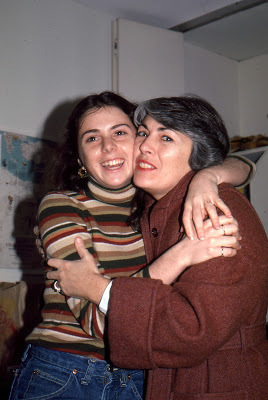
I dreamt through the night that I'd lost something given to me by my mother.
But that isn't it. That isn't it at all.
What I lost was her.




Published on February 20, 2012 03:45
February 19, 2012
living what he loves
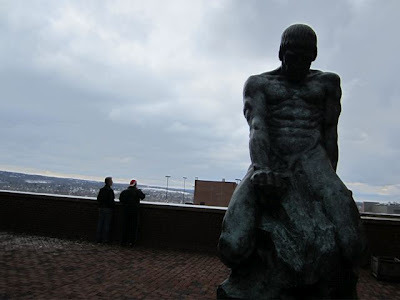
Not long ago, we stood at this edge of things and said goodbye to our son as he walked away, toward his first college semester. In a few months, he'll say goodbye to the school he has come to love.
We visited this weekend. Walked that campus once again, as we do whenever we go. We lived what he loves with him, if only for a few hours.
The greatest privilege of all.




Published on February 19, 2012 13:12
February 18, 2012
cat in snow
Published on February 18, 2012 04:47
February 17, 2012
yes, and this is brilliant: the short story defined
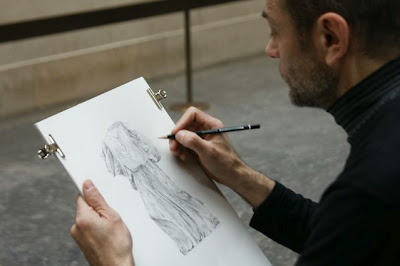
"A short story is by definition an odder, more eccentric creature than a
novel: a trailer, a fling, a warm-up act, a bouillon cube, a
championship game in one inning. Irresolution and ambiguity become it;
it's a first date rather than a marriage. When is it mightier than the
novel? When its elisions speak as loudly as its lines." — Stacy Schiff in the New York Times Book Review review of Nathan Englander's story collection, What We Talk About When We Talk About Anne Frank.




Published on February 17, 2012 17:10

